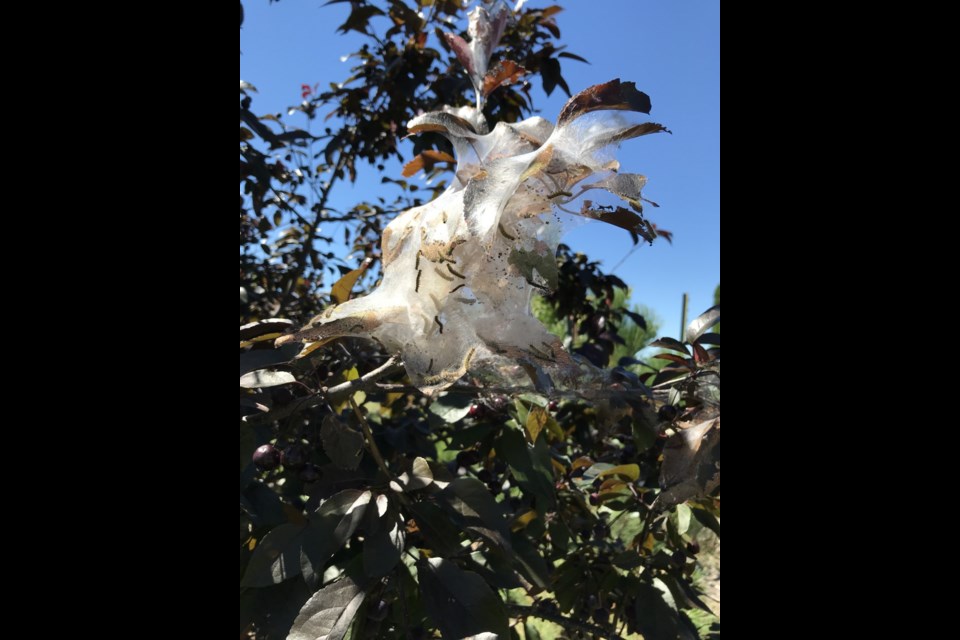You may have noticed some distinctive webs in your trees during the last couple of fall seasons. I first noticed them in some flowering crab trees and willow trees however, they have appeared in other tree species as well. Upon closer inspection, you will notice some small worms among the webs. This infestation has been identified as the fall webworm, Hyphantria cunea.
Some people have mistaken this worm for the forest tent caterpillar, Malacosoma disstria, however, they are not the same beast. Forest tent caterpillars occur in spring and early summer whereas the fall webworm appears in mid-August. Forest tent caterpillars are also much larger compared to the fall webworm. Forest tent caterpillars seem to prefer trembling aspen and poplar trees whereas fall webworms prefer apple, poplar, ash, choke cherry, pin cherry, elm, maple, willow and white birch trees. However, the fall webworm and the forest tent caterpillar can be found on various deciduous trees.
The fall webworm is native to North America. Infestations were more prevalent in eastern Canada in the past but with warmer temperatures, infestations on the Prairies have become more common. Initial signs of fall webworm include numerous webs on the outer branches of a tree. As the larvae develop, more and more webs will be spun to protect and hide the larvae. As the larvae grow, they feed on the leaves of the tree: first skeletonizing the leaf and then consuming the entire leaf. If the infestation is severe, an entire tree can be enclosed in the webbing and the entire tree will be completely defoliated. I have not observed such acute cases: the worst infestation that I have witnessed has been an absolute defoliation of a main branch.
Fall webworm larvae appear in August-September. The larvae are approximately 25mm and have pale yellowish-brown bodies with broad, dark bands down their backs. Long whitish hairs protrude from black and orange impressions along their body. In September, the larvae drop to the ground and burrow into the tree litter and soil, where they form cocoons in which they pupate.
The following spring, moths emerge in late June. The adult moths are white and have a 30-40mm wingspan with reddish-orange front legs. Soon after emerging, the moths mate and females can deposit 200-300 white to golden-yellow eggs on the underside of leaves. Approximately 2 weeks after the eggs are laid, larvae emerge and thus, the life cycle is complete.
Fall webworms will not kill a healthy tree however, their damage can be unsightly. Reduce damage by removing the nests and webbing. The entire infected branch can be pruned off and burned. Check under the leaves in early-mid July for eggs: crush eggs when visible. Since the fall webworms will not kill the tree, I recommend not using chemical controls and letting nature take its course. However, if you are insistent on spraying, check with local garden centres for recommended products. Be sure to use a strong blast of water with the spray to break through the webbing.
This column is provided courtesy of the Saskatchewan Perennial Society (SPS; [email protected]). Check our website (www.saskperennial.ca) or Facebook page (www.facebook.com/saskperennial) for a list of upcoming gardening events.




